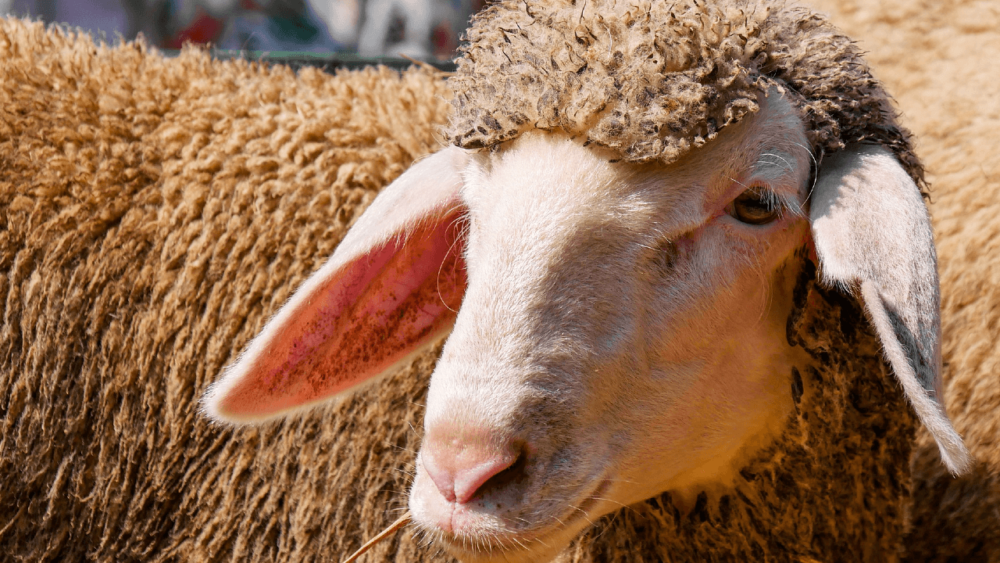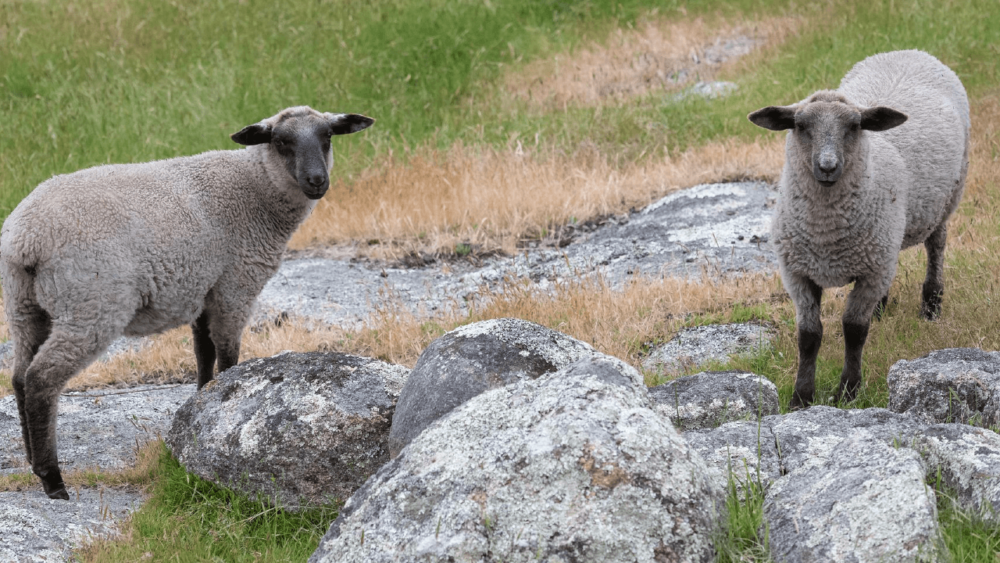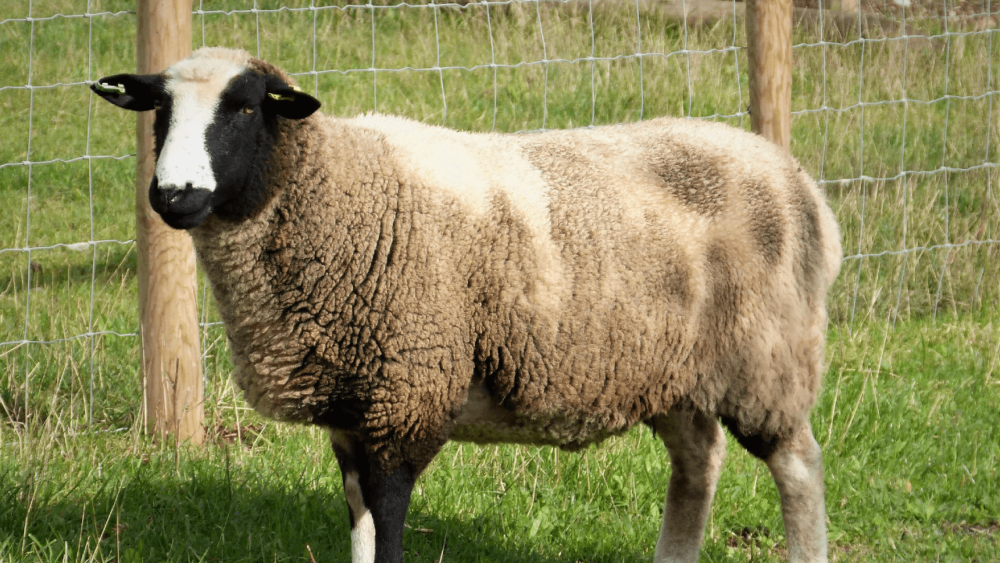If you want to raise sheep for meat, it can be difficult to figure out what breed to raise. Sheep breeds that grow larger and have a higher meat quality and taste are called meat sheep breeds. Sheep meat breeds usually grow faster and produce less milk than milk breeds.
Choosing the best sheep breed for your farm or homestead can be difficult. While any breed of sheep can be used for meat, not all breeds are ideal as a meat sheep. Some breeds are less resilient, others need a lot of supplementary feed, or are more suited to wool production.
Then there’s the meat. Every breed of sheep has a slightly different taste and texture.
Some people prefer the tenderness and fine texture of the Icelandic sheep, while others are more partial to the Welsh breeds’ buttery texture and well-rounded flavor.
Which sheep breed is the tastiest? Dorper, Katahdin, and Hampshire are the most popular sheep breeds for good flavor. Suffolk is the most popular breed for commercial sheep meat. If you want lean meat that’s full of flavor, mountain breeds like the Welsh Mountain or New Zealand Romney. The Southdown will add exotic flavor to your herd.
According to a survey done by BestFarmAnimals.com, the top three best-tasting sheep breeds were the Dorper, Kathan, and Hampshire breeds. But, most of our respondents are located in the United States. Depending on where you live, you will have different expectations about the flavor of the lamb, how it’s raised (affecting the flavor), and how young it’s butchered. Let’s dive into the best sheep breeds around the world.
The Best Lamb in The World: 5 of the Best Meat Breeds
There can never be one definitive breed that’s considered the best tasting meat in the world. It’s far too subjective a decision. But, this article will cover the five most popular sheep breeds loved for their flavor.
1. The Suffolk Sheep is the Most Popular Meat Breed in the World
The Suffolk sheep originated in the South of England in the early 1800s but now flourishes worldwide. A large sheep with more lean meat than others, it’s clear why the Suffolk is now one of the world’s most numerous sheep breeds.
Ranging between 95 and 275 kg, Suffolk sheep grow faster and larger than most, making them ideal for lamb and mutton production. By the time they’re 12 weeks old, most lambs are already market-ready.
This hardy breed has an excellent feed conversion ratio. That means you get more meat per pound of feed than you would with a less efficient breed. Suffolk sheep are also easy to handle and prolific breeders with an excellent lambing rate.
Suffolk sheep reach market weight very quickly, and some breeders use them for cross-breeding to introduce this trait into other smaller, slower-growing breeds. Due to this fast growth rate, Suffolk sheep need either very rich pasture or energy-dense supplements to promote and support that rapid growth and body mass.
The meat of the Suffolk sheep is lean and a little sweet with a good ratio of muscle to fat.
The only negative about the Suffolk is that it often requires supplementary feeding to sustain its rapid growth rate. Feeding your Suffolk sheep grain will help them to finish with a higher weight at the end of the summer.
2 The Katahdin is Hardy and Low Maintenance
Somewhat smaller than the Suffolk, the Katahdin is a low-maintenance and versatile breed of sheep. They mature quickly and are market-ready within 90 days, even if kept on pasture alone.
As a hair breed, the Katahdin is more heat-tolerant than many wool breeds and has superior parasite protection. Unlike wool breeds, the Katahdin produces no lanolin, which gives their meat a milder, less gamey flavor.
The Katahdin is a popular meat breed that can grow up to 250 lbs and produces high-quality, low-fat meat. They are also good breeders with a high fertility rate that can adapt to various climates and management systems.
3 Icelandic Sheep are Vigorous Growers and Excellent Foragers
Icelandic Sheep are vigorous growers and a popular choice of meat sheep. A mature ewe weighs around 150 lb, and rams average about 200.
They are alert, active creatures that can be shy and sometimes lack a solid flocking instinct, making them vulnerable to predators.
Having originated in Iceland, this breed is unsurprisingly hardy, cold-resistant, and capable of finding food in sparse terrain. They are reliable breeders and reach sexual maturity earlier than most, with seven-month-old ewes ready to breed.
Their meat is very lean and flavorful, as Icelandic sheep that live on pasture take on a hint of flavor from the grasses and herbs that make up their diet. For this reason, it’s also comparable to game meat or venison.
The Icelandic sheep’s meat also has high iron content and is very muscular with little fat. When slaughtered young (4-5 months), the Icelandic is said to have one of the most delicate, unique, and delicious flavors of all lamb.
4 The Cheviot is a Hardy Breed With a Mild Flavor
The dual-purpose Cheviot enjoys worldwide popularity. Originating in northern England, the Cheviot was exposed to harsh climate conditions and evolved into a hardy breed that requires little supplementary feed.
Cheviots are medium-sized sheep with ewes weighing 120 to 160 lbs and rams between 160 and 200. In addition to having delicious meat, the Cheviot has a short, stocky yet strong body that enables them to move efficiently over rocky and uneven terrain.
Cheviots do well on poor-quality pasture, rarely require supplementary feeding, and are resistant to many parasites that infect other sheep breeds. It’s also one of the best meat and milk sheep breeds for cold climates.
Lamb connoisseurs describe the meat of the Cheviot as having a mild to musky flavor due to the residual lanolin content.
5 The Dorset Sheep is a Solid International Meat Producer
The Dorset matures early, breeds year-round, and is the ultimate multi-purpose breed. In addition to their lean, muscular carcasses, Dorset sheep also produce a good-quality fleece and a sizable amount of milk.
Dorset ewes breed year-round, producing three fast-growing lambs a year. This ancient breed of sheep originated in England in the early 19th century and is generally docile and low-maintenance. Dorset rams average around 275 lbs, while the ewes reach 150-200 lbs.
Dorset sheep have lean, muscular carcasses, and their meat is mild, succulent, and tender.
The Most Popular Sheep Breeds in the US
After the profitable Merino, the dual-purpose Dorset is the second most popular sheep breed in the USA. Its succulent meat has a mild muttony flavor that makes it one of the best-tasting sheep breeds in the US.
The Suffolk is another popular and tasty breed in the US that shares its limelight with the celebrated Katahdin.
Dorper Sheep Meat Is Popular in the USA
The Dorper is another popular breed that, like the Katahdin, benefits from the lack of lanolin that comes with being a hair sheep. The meat of a Dorper sheep is, as a result, tender, mild-tasting meat and lacks the “mutton” flavor of some other breeds.
Perhaps the most intriguing thing about the Dorper is its ability to survive and thrive in very harsh conditions. Having originated in the desert, the Dorper has a more goat-like approach to its diet, utilizing shrubs and bushes more than other species.
The Dorper is a popular sheep breed in South Africa as well. It roams the inland Karoo areas, feasting on fragrant succulents that give its meat a herbaceous quality that is, in my experience, truly mouth-watering.
New Hampshire Sheep Raised Extensively in the USA
Dual-purpose breeds, like the Hampshire, are also popular in the US. The Hampshire is similar to the Suffolk in appearance is raised extensively to “market-lamb production.” A superior mutton breed, the Hampshire matures early and produces lean meat that is both full of flavor and low in fat.
Barbados Blackbelly
The Barbados Blackbelly is a smaller breed that matures comparatively slowly, reaching its ideal market weight only at two years of age. However, as a hair breed, they’re resistant to parasites and easy to maintain. The meat is mild, lean, and full-flavored.
The UK’s Five Most Popular and Tastiest Sheep Breeds
#1 The Manx Loaghtan has a Uniquely Gamey Flavor
This unusual breed of sheep occurs only on the Isle of Man and is one of the few to sport four horns instead of the traditional two. The meat is equally distinctive, as these sheep graze on the wild grasses and herbs of their unique environment. Reaching maturity at around 15 to 18 months old, the Manx Loaghtan is known for its lean, dark meat with an intense flavor not dissimilar to game and venison species. It also contains less cholesterol and fat than most commercial breeds.
#2 Welsh Mountain Sheep have an Excellent Meat-to-Bone Ratio
This hardy breed originated in the mountainous regions of Wales and was initially bred for milk and wool. These days, due to the breed’s good meat-to-bone ratio, the focus has switched to their meat.
There are five varieties of Welsh Mountain sheep, all of which are equally low-maintenance. Welsh Mountain sheep rarely require supplementary feeding, have excellent lamb survival rates, and are market-ready at 32 weeks old.
The meat of the Black Welsh Mountain sheep, in particular, is said to be tender, rich in color, and full of a distinct flavor.
# 3 Shetland Sheep are both Multi-Purpose and Tasty
Used for conservation grazing, meat, and wool production, Shetland Sheep are one of the UK’s oldest and most versatile breeds.
The Shetland produces high-quality meat that is finely textured, tender, and slightly sweet. These sheep store most of their body fat around the organs rather than in the muscles, making their meat far leaner than other more modern breeds.
#4 The Low-Maintenance Wilshire Produces High-Quality Meat
In the 18th century, Wiltshire sheep spent their days roaming through the Wiltshire Downs in southwest England, fertilizing wheat crops with their dung and urine. In more recent times, they’ve been bred exclusively for their meat, which is lean and full and flavor.
This ancient breed is becoming increasingly popular due to its hardiness, fertility, and fast growth rates. It is also one of the few wool breeds that sheds its coat naturally in spring, making it attractive to the commercial sector.
#5 The Herdwick is Unique to the UK’s Lake District
There are seven varieties of Herdwick sheep, all of which are dual-purpose. They’ve existed in the UK since the 10th century, grazing and shaping the rugged mountains of the Lake District.
Herdwicks are primarily reared for meat and produce a coarse, thick fleece ideal for carpets and loft insulation.
Herdwick sheep mature slowly, and the resulting meat is slightly gamey and carries the distinctive flavor of the heather and grasses found in the Lake District fells. Unlike other breeds, the Herdwick possesses a strong homing instinct so can be allowed to roam free.
Australian White: Australia’s Favorite, Most Flavorful Sheep Breed
The Australian White was explicitly developed for the Australian climate and is growing in popularity. It was created by selectively breeding the Poll Dorset, Texel, Van Rooy, and White Dorper. The result is a self-shedding breed that produces high-quality meat with a low-fat melting point.
Known as the “Wagyu of the sheep world,” the Australian White’s growing popularity has seen prices soar. Last year’s top-selling ram went for a record AU$90,000, the equivalent of around $65,000.
The Dorper is also popular in Australia, as is the Wiltshire, Dorset, and Suffolk.
The Most Expensive Sheep Breeds for Eating
If you’re going to invest in a small flock of sheep for your small-holding, you’ll probably not be opting for the Texel, no matter how good it tastes. Capable of producing top-quality wool and delicious-tasting meat, the Texel is the most expensive sheep breed globally.
In the US, the average price for a Texel sheep hovers at around $750 but can reach as much as $492,000! That was the price a six-month-old Texel ram by the name of Double Diamond sold for in 2020.
You don’t have to rob a bank to start rearing sheep for meat, as most breeds are a lot more affordable than the Texel.
Price Comparison of Meat Sheep in 2022
| Breed | Market Ready Age | Price (Ewe) | Price (Ram) |
| Texel | 5 to 6 months | $750 – $850 | $600+ |
| Suffolk | 9 to 12 weeks | $100 – $300 | $300 – $500 |
| Cheviot | 5 to 6 months | $200 – $250 | $400 – $500 |
| Icelandic | 5 to 6 months | $300 – $400 | $500 – $600 |
| Dorper | 4 months | $200 – $250 | $500 – $600 |
| Dorset | 12 to 15 weeks | $300 – $400 | $400 – $600 |
How To Ensure Consistent Meat Quality
There will be a distinct taste difference between a young lamb and an old ewe, castrated male or ram. Lambs are generally slaughtered at 5-8 months of age to avoid the toughness and “gamey” flavor of an older sheep.
The hormones released at maturity to prepare a sheep’s body for reproduction also affect the flavor and consistency of the meat.
If you want to harvest consistently pleasant-tasting meat, decide at what age you’re going to slaughter your sheep and stick to it.
My Essential Sheep Supplies
This list contains affiliate products. Affiliate products do not cost more but helps to support BestFarmAnimals and our goal to provide farm animal owners with accurate and helpful information.
This little giant bucket fits on a fence and this one’s easy to carry.
A sturdy dog collar is essential. Don’t do rope (they’ll break and tangle) or chain (injury!).
A Black Water Tub is way nicer than buckets that tip over. I like to get a 20 or 30-gallon in each pen so my goats have plenty of water, but you can get 100-gallons if you have a lot of sheep in one pen.
Loose minerals in a small bag or a Purina 50 lb bag, and a mineral feeder for free-choice is the best option. One side holds minerals, and the other holds baking soda. Don’t feed sheep goat minerals because it usually contains copper- something that is fatal to sheep.
Hoof trimmers are a necessity because you’ll need to trim your sheep’s hooves every few months. These are nice for the price.
Shearers like these aren’t too costly but do a decent job. Sheep wool jams normal shearers and once you are ready, I’d recommend the ones from Premier 1 Supplies.
Don’t make the mistake I made by waiting to order a drench gun before you need it. I was surprised by how often I use it. It helps with bloating, dehydration, and other ailments. Here’s a good drench, but you can also drench a bloat solution or water if dehydrated.
Digital Thermometor for when your lambs act sick. You’ll need to know if their temps are too low or too high so you can accurately diagnose the issues.
Vetericyn for wound care. It makes a big difference in a speedy recovery.
These heavy duty clips for fences, to clip ropes to collars, and a million other uses. They are stronger than carabeeners, which we broke a dozen of before switching to these.
Conclusion
The best meat breeds are those that are easy to keep and mature quickly. The Suffolk is the most popular breed of meat sheep internationally, while hair breeds, like the Katahdin and Dorper, are ideal for beginners.






